Sling Training Is the Smart Way to Build Total-Body Strength
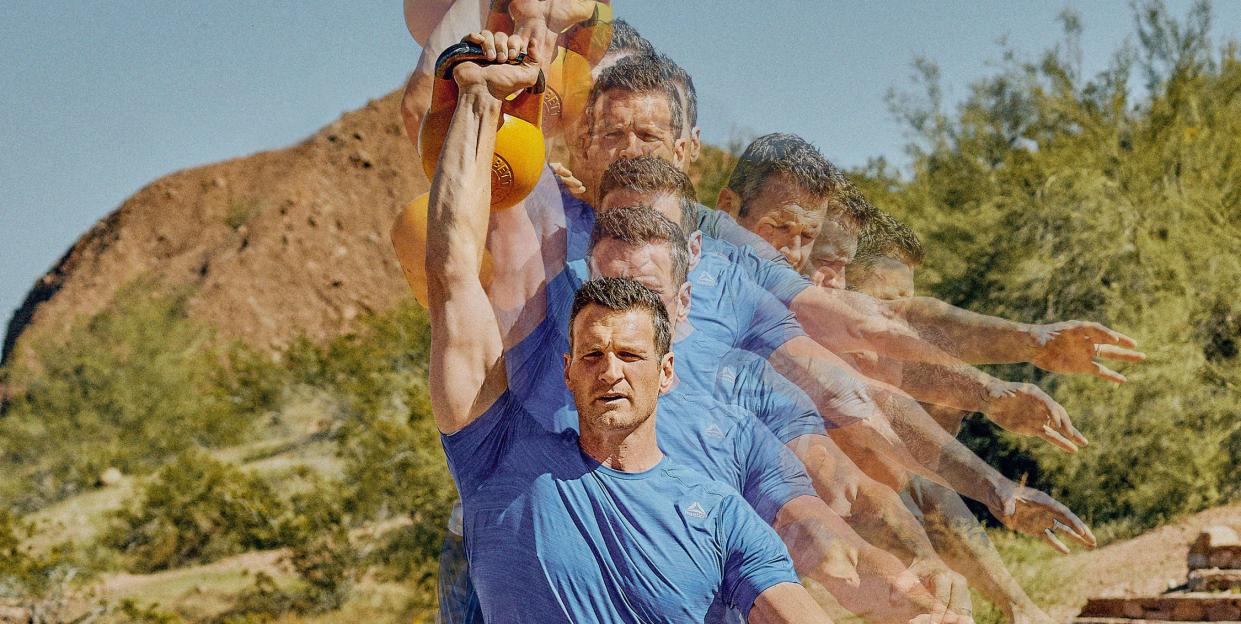
Picture Super Bowl-winning quarterback Patrick Mahomes launching a deep ball. Before the release, he steps forward with his left foot, arches his spine, and rotates his hips back to the left. The force then travels through his hips and core into his right shoulder. Amateurs laud Mahomes’s great arm strength. But movement experts know the truth: Mahomes most accurately has an efficient anterior oblique sling.
“A throw is not a single muscle working,” says Arizona-based trainer Josh Henkin, C.S.C.S. “It’s a series of muscles working together called a sling.”
This sling subsystem is a set of muscles that runs from your feet to your hips to your core to your arms. Your body has several slings, and learning the exercises that train them can help you build real-world strength and athleticism. Working slings (instead of muscle groups) alleviates stress on individual muscles and challenges your body to move with greater efficiency and coordination. That’s why a growing number of trainers are building slings into workout programs. “We’re tying the kinetic chain together,” says Henkin. “That’s a step beyond functional fitness and way beyond muscle isolation.”
Sling science reveals that muscles, once viewed as discrete motion-producing units, work together in long chains, linked by fascia, the weblike substance surrounding muscles, joints, tendons, and ligaments. These slings control your body like a system of pulleys, passing through your torso and creating movement at key joints. Training while focusing on slings optimizes athletic performance and makes every exercise both a core burner and a full-body challenge.
The History Of Sling Training
The concept of slings has its roots in research from the 1980s, when Canadian physiologist Serge Gracovetsky, Ph.D., observed quadruple amputees “walking” on their hip sockets by rocking their torsos backward, then swinging their torsos forward. Gracovetsky posited that the basis of human movement lies in rotational actions in the spine, lower back, and hips. Arm and leg muscle movements, he wrote in his book The Spinal Engine, begin in the spine. That led movement experts Diane Lee and Thomas Myers to separately develop similar theories that the muscles that drive those movements are organized into slings. Their approach was adopted by innovative physical therapists working with elite athletes in the late ’90s.
About five years ago, the rise of functional fitness caught the attention of Henkin and other trainers—but they wanted more. They looked to physical therapists for smarter movements. Back squats are great, and sure, they’re functional. But they don’t replicate total-body athletic movements. Slings could.
Not all gyms embrace sling exercises, and they’ve taken so long to catch on because they’re complicated. Just try the Hero Clean and Press (the move on the previous page). You have to rotate your hips to the left—like a boxer throwing a cross—while bending to grab a kettlebell, then rotate back to the right and pull the bell to your shoulder. And then you have to lunge and press the bell overhead.
But five reps on each side pushes shoulders, lats, abs, and glutes to their limits —and it does more than that, says Henkin. It teaches dozens of muscles to work in concert, just like they should when you run, jump, and throw. Oh, and you’re spiking your heart rate and burning calories, too. Ready to give sling training a shot? We’ll show you how.
The Sling Training Exercises You Should Do
According to influential massage therapist Thomas Myers, author of the book Anatomy Trains and an authority on slings, more than a dozen slings exist in the body. Physical therapists and trainers, though, emphasize four. Add these moves to your workout to start training your slings—or combine them into one workout, doing three sets of each, for a sling-powered total-body blast.
The Anterior Oblique Subsystem
This runs diagonally across the front of your torso, helping you pull down and across your body. Think of a tennis serve or the act of giving a friend a high five. It includes your internal and external obliques and your hip adductors.
Train it: Half-Kneeling Band Press
Attach a resistance band to something at hip level behind you; grasp it with your right hand. Kneel on your left knee, right foot flat on the ground in front of you, a dumbbell held at your left shoulder. Press your right arm forward, keeping your core tight. This is the start. Now press the weight overhead with your left hand. Return it to the start. That’s 1 rep; do 8 to 10 per side.
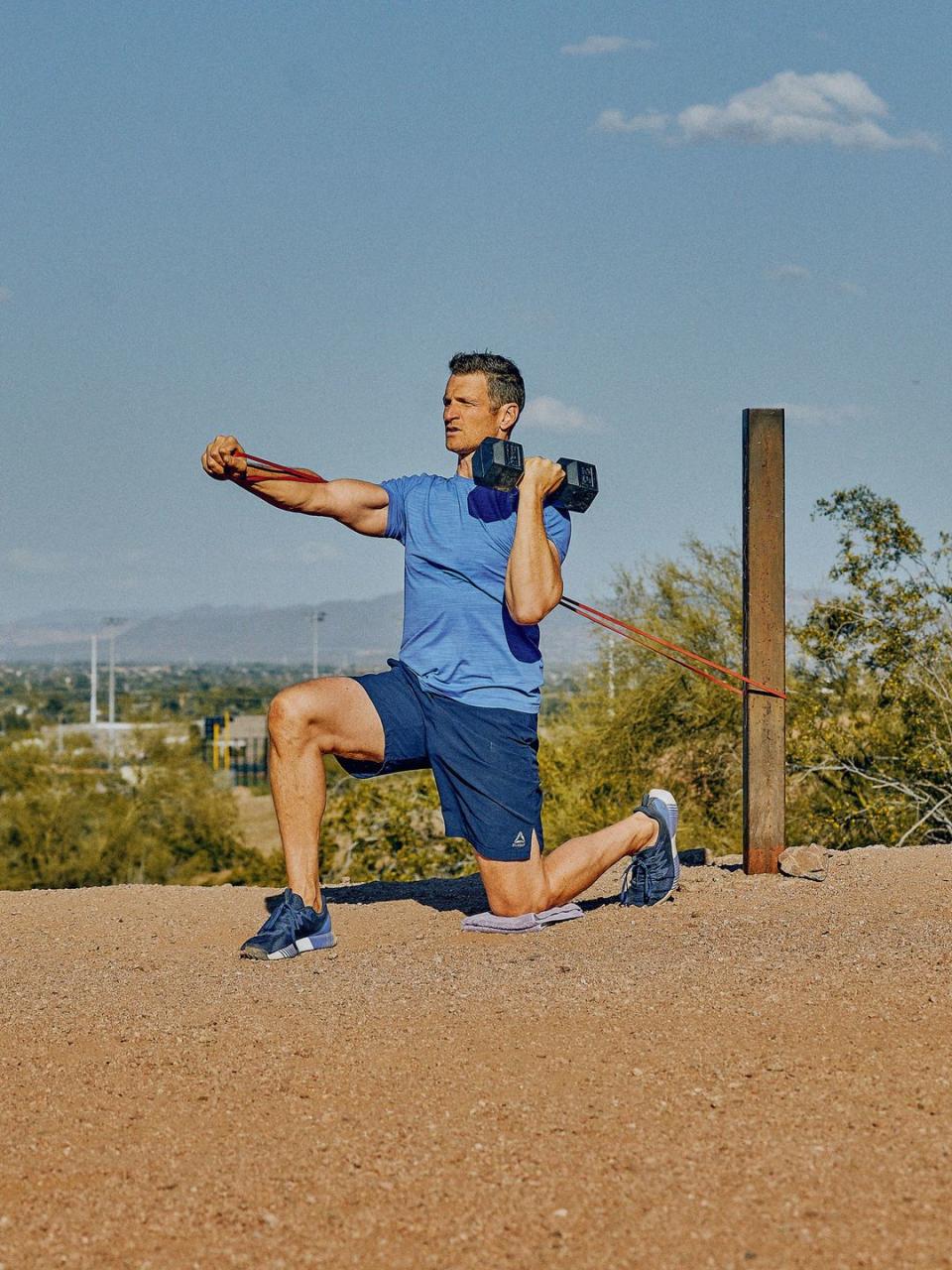
The Deep Longitudinal Subsystem
This runs vertically fromyour neck along your back down to your foot. It helps you stand up straight, extending your hips and spine. Whenever you do a deadlift, you’re training the DLS. Your glutes, lats, and lower back muscles are part of this subsystem.
Train it: Snatch to Reverse Lunge
Stand holding dumbbells at your sides. With a flat back, hinge at your hips, pushing your butt back and bending your knees slightly until the weights are at knee height (1).
This is the start. Explode upward, punching the weights overhead (2), then step your left foot backward and lower into a lunge, left knee on the ground (3). Shift your right foot backward so you’re kneeling (4). Reverse the moves back to the start. That’s 1 rep; do 5 per side.
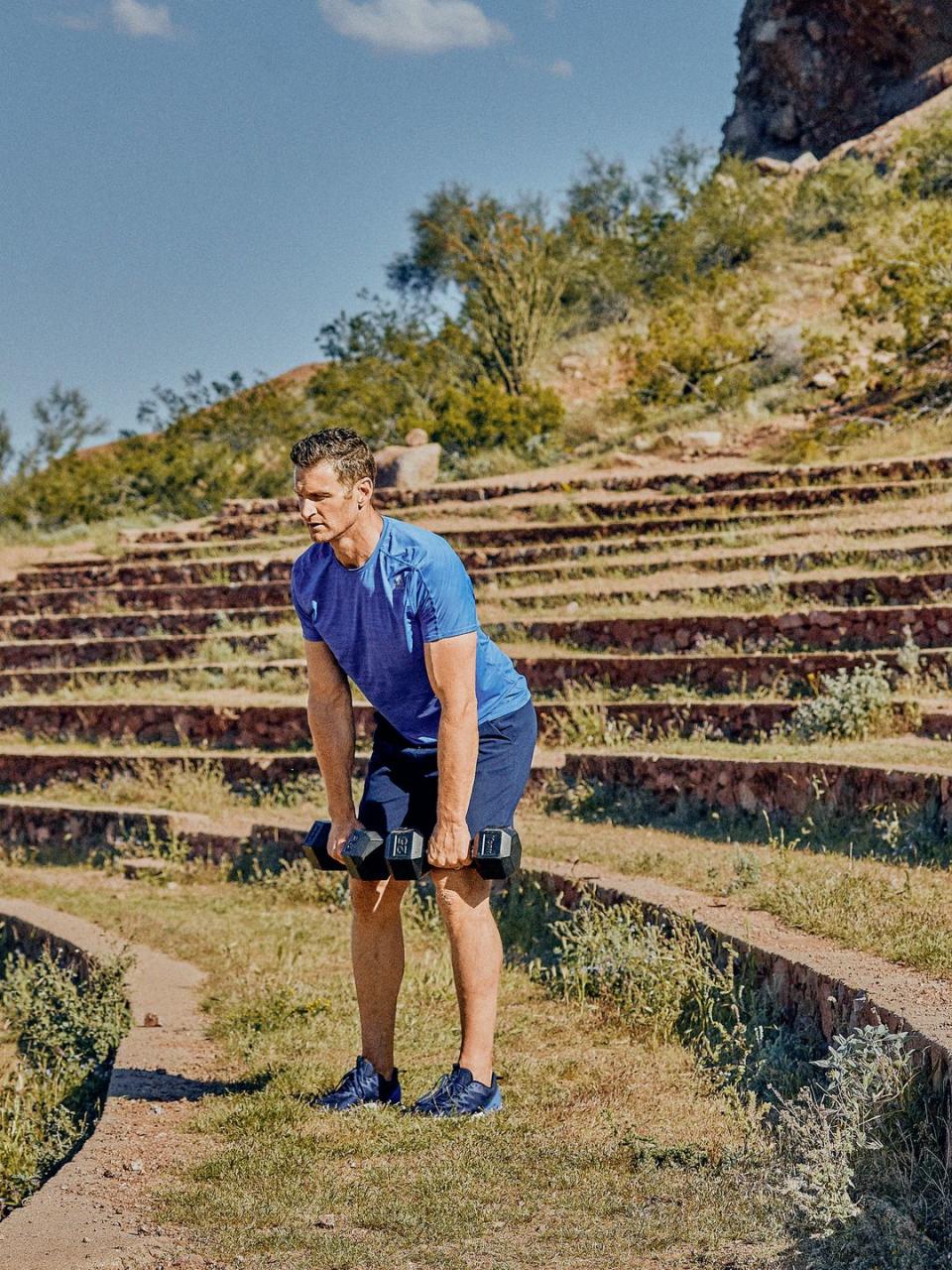
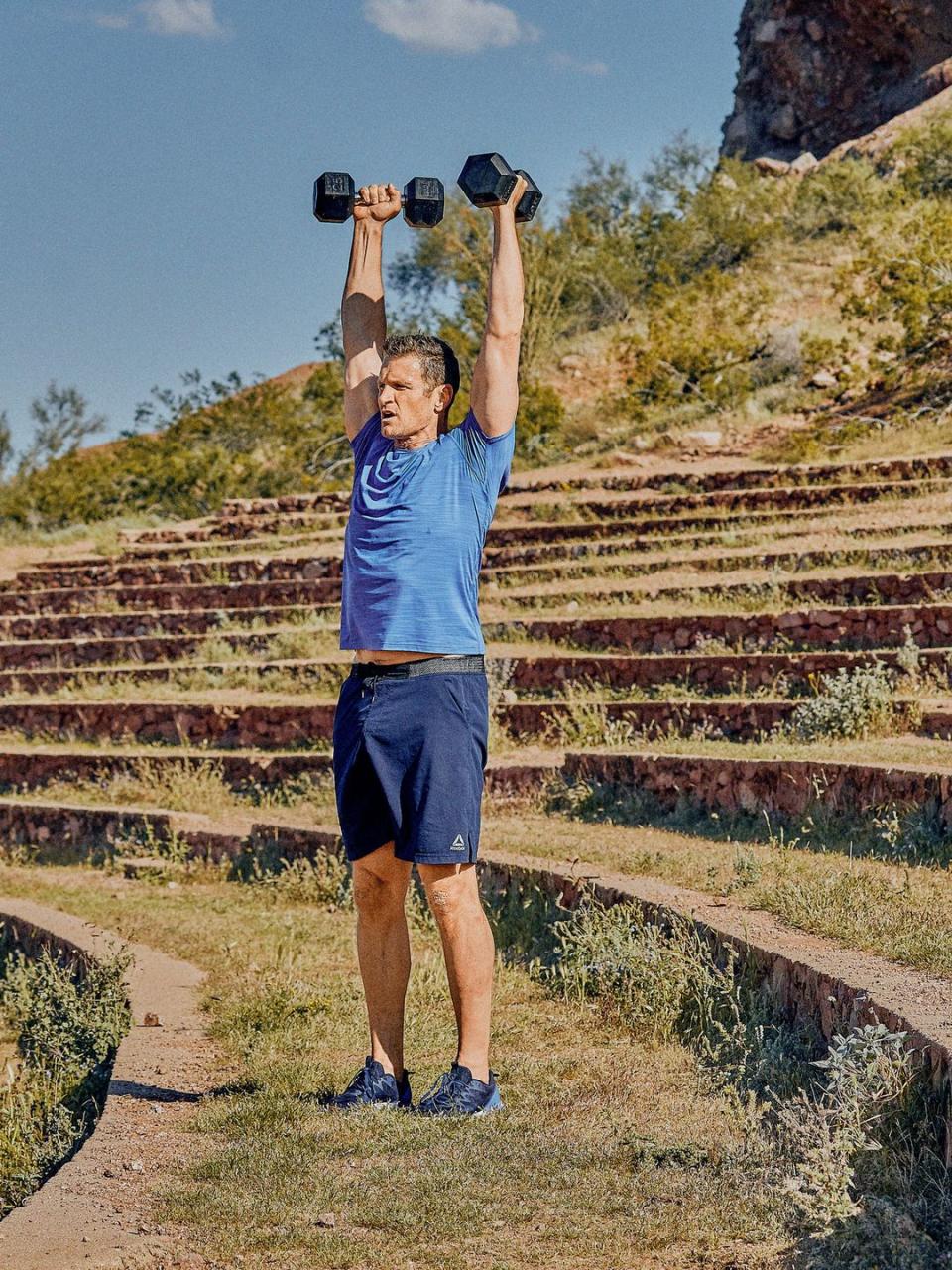

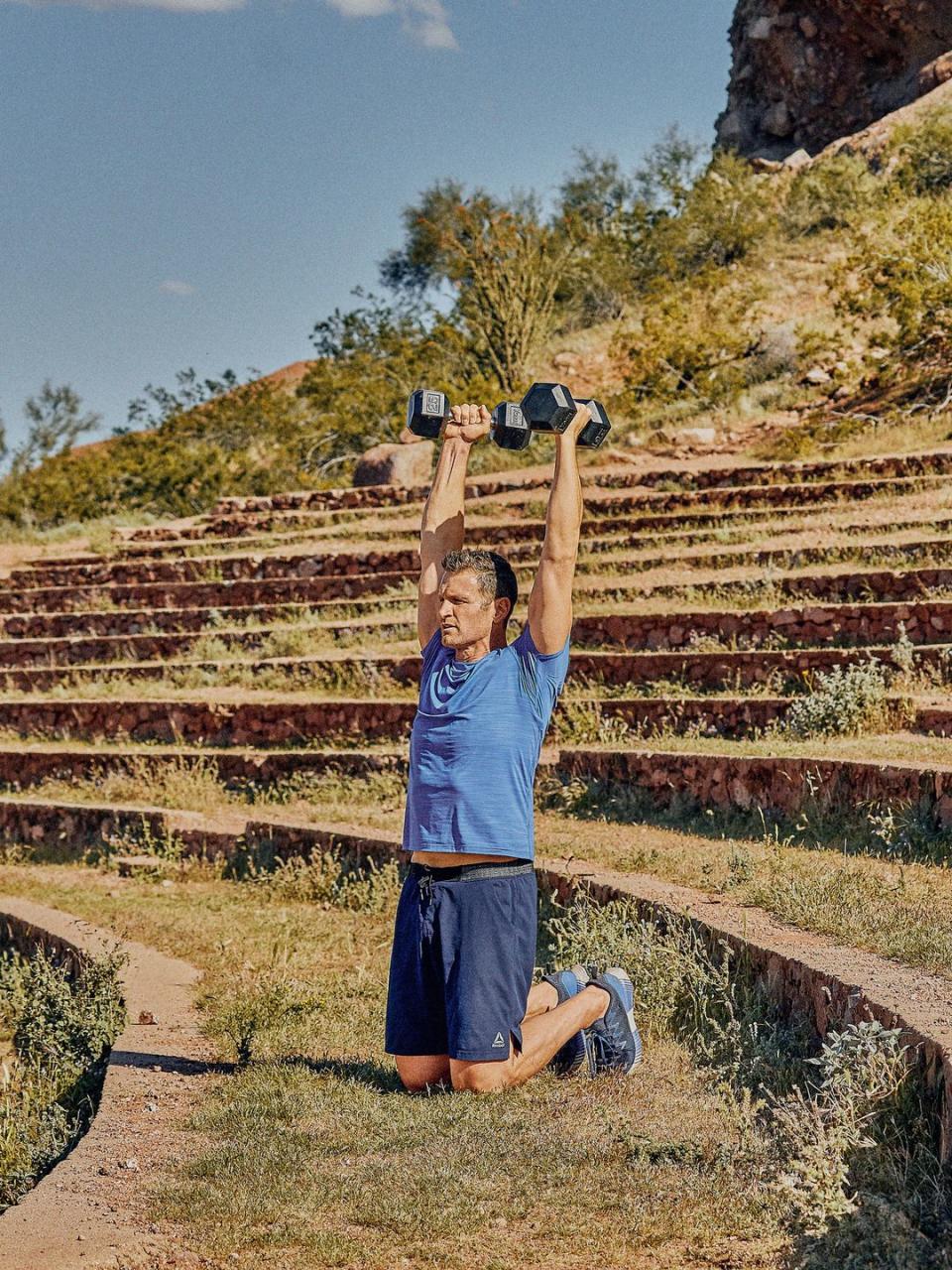
The Lateral Subsystem
This includes the small muscles of your pelvis and groin, your gluteus medius and minimus, and your thigh and knee muscles, which help you balance on one foot and perform single-leg movements like lunges and stepups. It includes your core muscles, glutes, and hip external rotators.
Train it: Lateral Lunge to Row
Hold a pair of dumbbells at your sides, feet wide. Hinge forward at your hips, bending your knees slightly and keeping your back flat, until your torso is parallel to the ground. Bend your right knee as you sink into your right hip; lower the dumbbells as you do this. This is the start. Now row the weights to your chest and straighten your right knee as you bend your left knee and shift your weight to the left. That’s 1 rep; do 8 alternating reps per side.
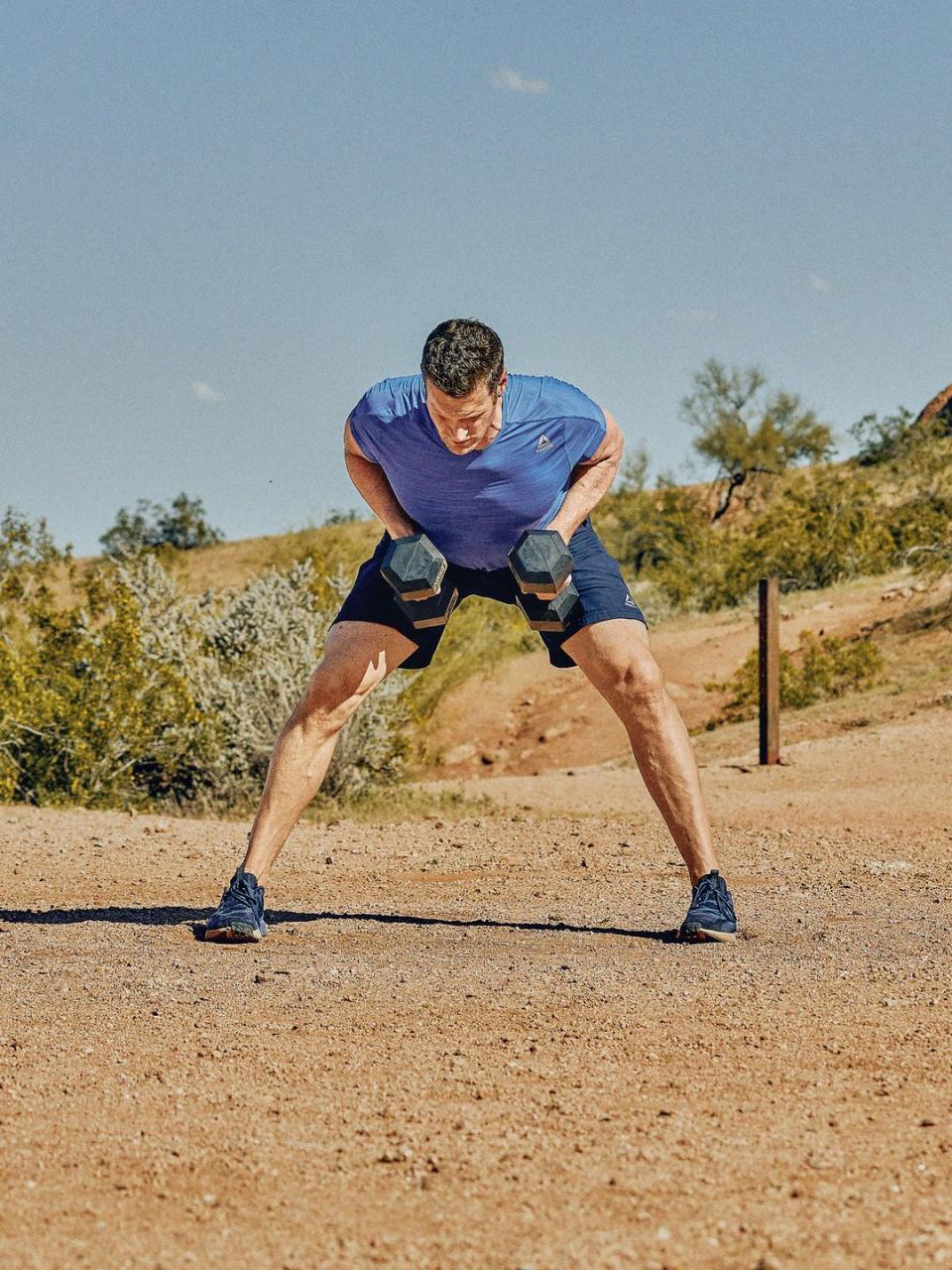
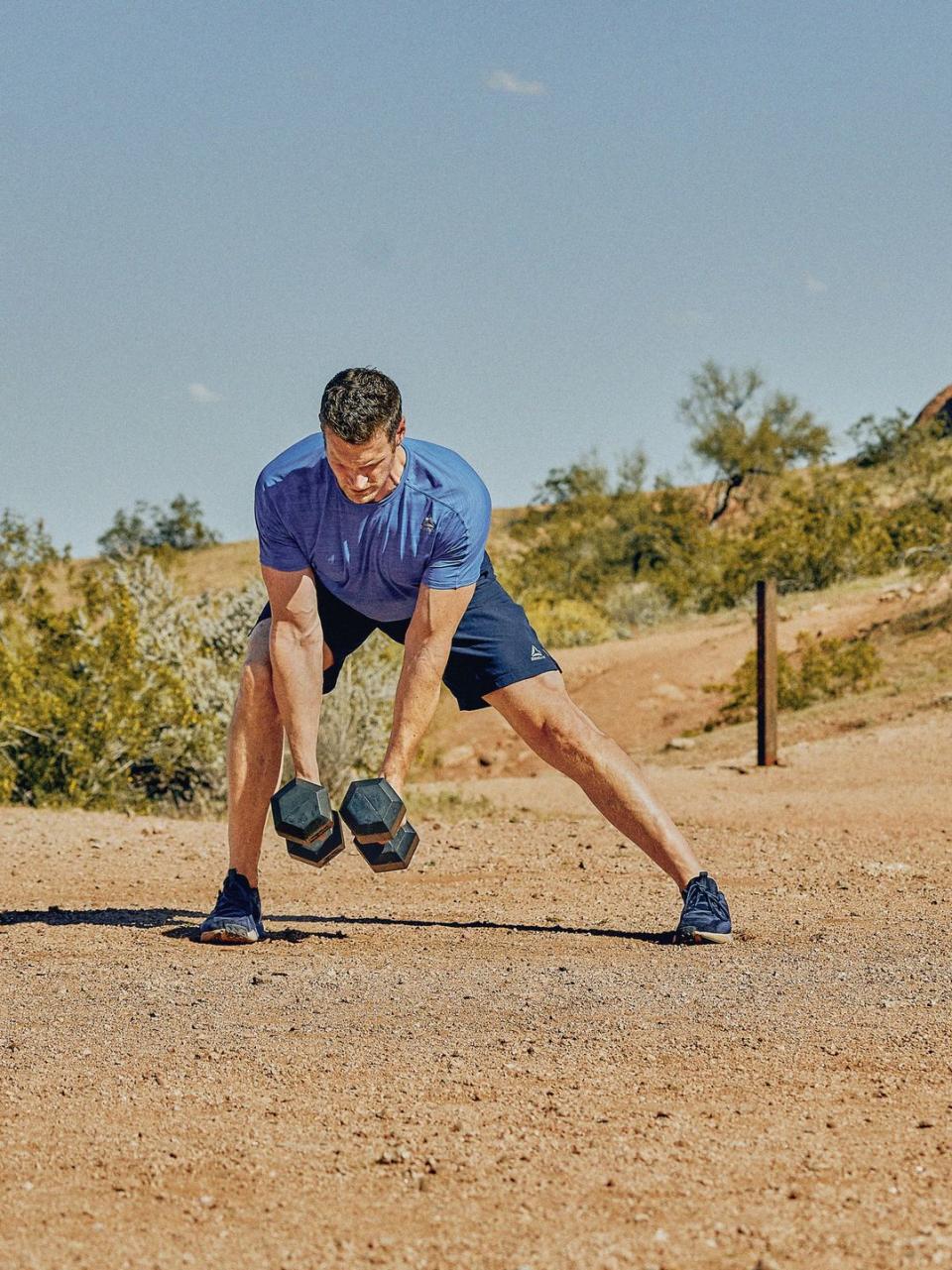
You Might Also Like

